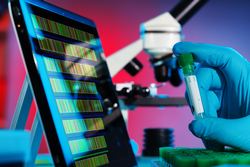Two fish pathogens identified and sequenced
Aquaculture is a growing industry and a crucial part of the effort to meet the food needs of an increasing global population. Pathogens that infect farmed fish can have a big impact on the success of such operations. By identifying and studying the different types of pathogens that attack farmed fish, scientists help the industry to manage and address this threat. The EU-funded CHLAFISH (Novel fish pathogens of the Chlamydiae: Genomic, proteomic and metabolomic investigations) project used genomics to identify bacteria in the phylum Chlamydiae that affect high-value farmed fish species in the Mediterranean. The scientists identified three species of bacteria that cause white cysts on the gills (epitheliocystis) of two valuable aquaculture species: gilthead and sharpsnout seabream. Before this research, two of these bacterial species were not known to science. One of the most valuable outputs of the project was the draft genome sequences of the two novel bacteria (Ca. ichthyocystis and Ca. Endozoicomonas cretensis). This is the first time that scientists have identified causative agents of epitheliocystis. The results of this project have contributed to our understanding of the diversity of pathogens that affect farmed fish. In the future, this will help in treating and controlling these pathogens in commercial aquaculture facilities.
Keywords
Fish pathogens, bacteria, farmed fish, aquaculture, CHLAFISH, Chlamydiae, epitheliocystis



